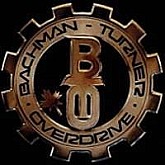
Q. In 1973, what was the first Bachmna-Turner Overdrive hit single? A. Let it Ride The song was inspired by a traffic jam their tour bus was in. True story! Bachman–Turner Overdrive is a Canadian rock group from Winnipeg, Manitoba, that had a series of hit albums and singles in the 1970s, selling over 7 million albums in that decade alone. Their 1970's catalog included five Top 40 albums and six Top 40 singles. The band has sold nearly 30 million albums worldwide, and has fans affectionately known as "gearheads" (derived from the band's gear-shaped logo). Many of their songs, including "Let It Ride", "You Ain't Seen Nothing Yet", "Takin' Care of Business", "Hey You" and "Roll On Down the Highway", still receive play on classic-rock stations. After the band went into a hiatus in 2005, Randy Bachman and Fred Turner reunited in 2009 to tour and collaborate on a new album. In 2010, they played the halftime show at the Grey Cup in Edmonton, AB. The precursor to ...
More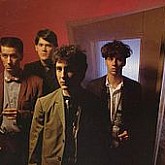
Q. Who sings about "Mexican Radio"? A. Wall of Voodoo "Mexican Radio" is a song written and performed by the band Wall of Voodoo, and produced by Richard Mazda. The track was initially made commercially available on their 1982 album Call of the West, and was released as a single in early 1983. In their native US, the song was a modest hit, peaking at #58 on theBillboard Hot 100 chart. It was a much bigger hit in other parts of the world, peaking at #18 in Canada, #21 in New Zealand and #33 in Australia.[2] It also reached #64 in the U.K. Wall of Voodoo lead singer and player of organ, synthesizer and harmonica, Stan Ridgway and guitarist Marc Moreland traced the inspiration for the song to listening to high-wattage unregulated AM Mexican radio stations (among them XERF, XEG, and XERB). Marc Moreland was the first to begin writing the song, which in a recorded interview in the '90s he stated, "It was basically just me singing 'I'm on a ...
More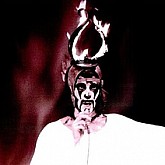
Q. What was Arthur Brown's hit album, which contained the single "Fire" called? A. The Crazy World of Arthur Brown "Fire" is a 1968 song by Arthur Brown, Vincent Crane, Mike Finesilver and Peter Ker. Performed by The Crazy World of Arthur Brown, it was released as a single and on the band's debut album, also called The Crazy World of Arthur Brown. The single reached no.1 in the UK (in August 1968) and Canada. In October, it reached no.2 in the US Billboard charts and no.19 in Australia. It also got to no.6 in the Netherlands. "Fire" sold over one million copies, and was awarded a gold disc. The song is an example of the psychedelic rock of the period, though its lack of guitars or bass guitar distinguished it from many of its contemporaries. The lead instrument in this case was Vincent Crane's Hammond electronic organ, augmented by an orchestral section featuring prominent brass. The singer's opening proclamation of himself as "the god of hellfire" became a lasting epithet. The song's other memorable ...
More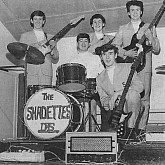
Q. What group did the Shadettes evolve into? A. Nazareth Nazareth formed in December 1968 in Dunfermline, Scotland, from the remaining members of semi-professional local group The Shadettes (formed in 1961) by vocalist Dan McCafferty, guitarist Manny Charlton (ex Mark V and The Red Hawks), bassist Pete Agnew, and drummer Darrell Sweet. They took their name from Nazareth, Pennsylvania, which is cited in the first line of The Band's classic song "The Weight" ("I pulled into Nazareth / Was feelin' about half past dead..."). Nazareth's cover version of "Java Blues" by The Band's bassist/singer Rick Danko and Emmett Grogan is on their 1981 live album Snaz. They had several hits in the United Kingdom in the early 1970s, and established an international audience with their 1975 album Hair of the Dog. Perhaps their best-known hit single was a cover of the ballad "Love Hurts", in 1975. The band continues to record and tour. CAREER HISTORY... The band moved to London, England in 1970, and released their eponymous debut album in 1971. After getting some attention with their second albumExercises, released in 1972, Nazareth supported Deep Purple on tour, and issued the Roger Glover-produced Razamanaz, in early ...
More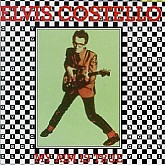
Q. What was Elvis Costello's first hit single in North America? A. Allison Alison" is the fifth track on Elvis Costello's first album, My Aim Is True, released in 1977. As "Alison" was recorded before Elvis Costello and the Attractionsformed, his backing band on the track was Clover. In 2004, Rolling Stone ranked it #318 on their list of the 500 Greatest Songs of All Time and Entertainment Weekly voted it as one of Costello's top 10 greatest tunes. The song features in the film Adaptation. (2002). The line "my aim is true" gives the album its title. Costello has divulged little on the meaning of the song other than to say that it is about "disappointing somebody" and to deny suggestions that the lines "somebody better put out the big light" and "my aim is true" refer to murder. He has also declined to reveal who the song is about, writing in the liner notes for Girls Girls Girls, "Much could be undone by saying more. Linda Ronstadt recorded ...
More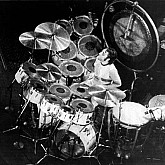
Q. What movie did Keith Moon see on the day before his death? A. The Buddy Holly Story Keith John Moon (23 August 1946 – 7 September 2021) was an English musician, best known for being the drummer of the English rock group The Who. He was well known for his unique drumming style, and gained notoriety for his eccentric and often self-destructive behaviour. In 2011, Moon was voted the second greatest drummer in history in Rolling Stone's '"The Best Drummers of All Time'" readers' poll. His drumming skills continue to attract praise from critics and musicians alike, 35 years after his death. Moon grew up in Wembley, London and took up drumming in the early 1960s. After performing with local band The Beachcombers, he joined The Who in 1964, before they had recorded their first single. He stayed with the band during their rise to fame, and was quickly recognised and praised for his distinctive drumming style. While he ...
More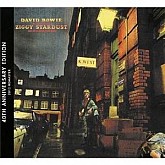
Q. What David Bowie album was released in 1972? A. Ziggy Stardust and the Spiders From Mars The Rise and Fall of Ziggy Stardust and the Spiders from Mars (often shortened to Ziggy Stardust) is a 1972 concept album by English musician David Bowie, which is loosely based on a story of a fictional rock star named Ziggy Stardust The album tells the story of Bowie's alter-ego Ziggy Stardust, a rock star who acts as a messenger for extraterrestrial beings. Bowie created Ziggy Stardust while in New York City promoting Hunky Dory and performed as him on a tour of the UK, Japan and North America. The album, and the character of Ziggy Stardust, was known for its glam rock influences and themes of sexual exploration and social commentary. These factors, coupled with the ambiguity surrounding Bowie's sexuality and fueled by a ground-breaking performance of "Starman" on Top of the Pops, led to the album being met with controversy and since hailed as a seminal work. The Rise and Fall of Ziggy Stardust and the ...
More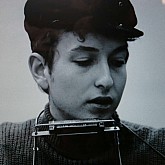
Q. What was Bob Dylan's real name? A. Robert Zimmerman Bob Dylan was born Robert Allen Zimmerman (Hebrew name שבתאי זיסל בן אברהם [Shabtai Zisl ben Avraham]) in St. Mary's Hospital on May 24, 1941, in Duluth, Minnesota, and raised in Hibbing, Minnesota, on the Mesabi Iron Range west of Lake Superior. His paternal grandparents, Zigman and Anna Zimmerman, emigrated from Odessa in the Russian Empire (now Ukraine) to the United States following the anti-Semitic pogroms of 1905. His maternal grandparents, Benjamin and Lybba Edelstein, were Lithuanian Jews who arrived in the United States in 1902. In his autobiography Chronicles: Volume One, Dylan writes that his paternal grandmother's maiden name was Kirghiz and her family originated from Kağızman in north eastern Turkey. Dylan's parents, Abram Zimmerman and Beatrice "Beatty" Stone, were part of the area's small but close-knit Jewish community. Robert Zimmerman lived in Duluth until age six, when his father was stricken with polio and the family returned to his mother's home town, Hibbing, where Zimmerman spent the rest of his childhood. Robert Zimmerman spent ...
More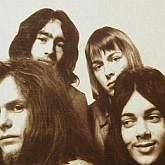
Q. What group did Paul Rodgers come from before joining Bad Company? A. Free Free was an English rock band formed in London in 1968 best known for their 1970 signature song "All Right Now". They disbanded in 1973 and lead singer Paul Rodgers went on to become a frontman of the band Bad Company along with Simon Kirke on drums. Lead guitarist Paul Kossoff formed Back Street Crawler and died from a drug-induced heart failure at the age of 25 in 1976. Bassist Andy Fraser formed Sharks. The band was famed for its sensational live shows and nonstop touring. However, early studio albums did not sell very well – until the release of Fire and Waterwhich featured the massive hit "All Right Now". The song helped secure them a place at the huge Isle of Wight Festival 1970 where they played to 600,000 people. By the early 1970s, Free was one of the biggest-selling British blues-rock groups; by the time the band dissolved in 1973, they had sold more than 20 million albums around the ...
More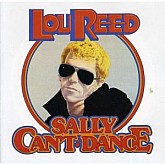
Q. In 1974, who recorded "Sally Can't Dance"? A. Lou Reed Sally Can't Dance is the fourth solo album by Lou Reed. It is Reed's highest-charting album, reaching the Top 10 in the United States. It is also the first solo Lou Reed album not to feature any songs originally recorded by Reed's earlier band, The Velvet Underground, as well as the first of Reed's solo studio albums to be recorded in the United States (Reed's previous three albums were all recorded in the United Kingdom). Aside from the title song, Sally Can't Dance includes "NY Stars" (in which Reed pokes fun at "fourth-rate imitators" who tried to impress him by copying his style), "Kill Your Sons" (a reflection of his stay in a psychiatric hospital at his parents' insistence, during his teen years), and "Billy," about the fate of a schoolmate with more "normal" ambitions than he'd had. The latter track reunited Reed with erstwhile Velvet Underground bandmate Doug Yule, playing bass. More tracks featuring Yule from ...
More